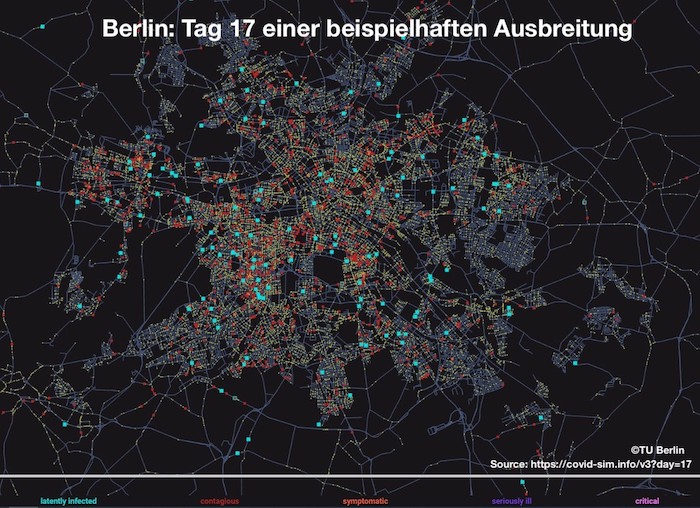Mathematics in the Pandemic – Assistance in the Crisis by Berlin Mathematics

Berlin Map: Outbreak Day 17 – Interactive Visualization of Covid-19 Virus Spread Research
How modeling and simulations by two Berlin research groups help to predict the future and support decision-makers. The approach is the same; the difference lies in the dimensions.
While the research group led by Edda Klipp from Humboldt-Universität zu Berlin focuses on a small town with complex models, the teams led by Kai Nagel from Technische Universität Berlin, and Christof Schütte and Tim Conrad from the Zuse Institute and Freie Universität Berlin refer to the big city of Berlin and mobile phone evaluations.
What happens if we all stay at home, if we just go to work, if the schools and kindergartens reopen? These are all questions that have been on our minds for a year and the effects of which we can also follow daily in the media. These questions have been incorporated into the mathematical calculations of two major Berlin research groups. The calculation models used are based on the same method: agent-based modeling. Agents are virtual avatars that move and perform activities in a computer simulation based on given rules. As Björn Goldenbogen of the Klipp Group points out, “Only an agent-based model can make realistic statements because it can represent infection dynamics via human-to-human interaction.”
Berlin is known worldwide where applied mathematics is highly concerned. This is also underlined by the Cluster of Excellence MATH+, in which all of Berlin’s mathematics is involved. Most of the scientists in the two research groups are MATH+ members.
Read more (English)
Read more (Deutsch)

